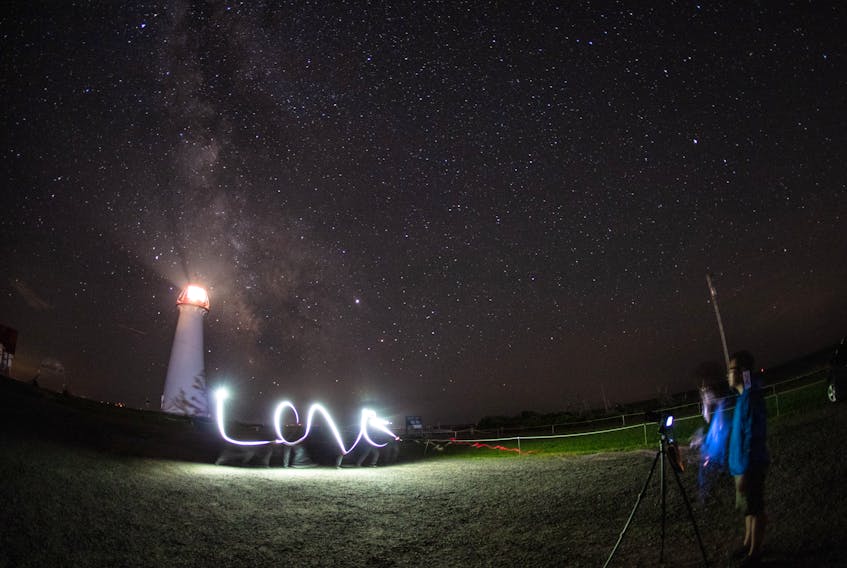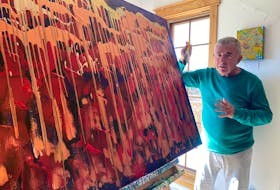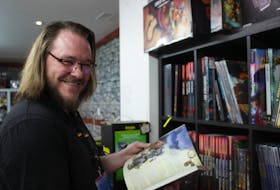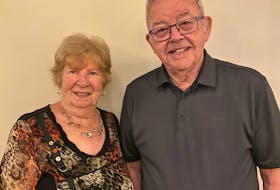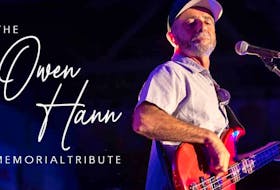Since the beginning of time, people have been looking at the stars either for direction or as a sense of wonderment. Thousands of years later, astronomy remains a popular pastime.
For Enfield, N.S. resident Jeff Donaldson, astronomy is a great hobby because he says he gets to spend time outside and loves the thrill of seeing something in the sky for the first time. These instances, he says, are called a Galileo Moment.
The phrase dates to 2009 during the International Year of Astronomy when Donaldson says a term was going around describing the feeling you get seeing something for the first time like the shadows being cast on the moon from the sun rising above the mountains or seeing the rings of Saturn for the first time.
Donaldson still remembers his first Galileo Moment. In the early 1980s, he says his father received a small telescope through which he saw his first view of Saturn’s rings, hooking him for life.
“I still remember the sky and how low it was and how amazing it looked,” he says.
Roy Bishop, of Avonport, N.S., clearly remembers his first Galileo Moment.
In 1945, at the age of five, Bishop saw a solar eclipse. This passion stayed with him all his life, leading to a career as a physics professor at Acadia University. Now, 67 years later, Bishop serves as the past-president of the Royal Astronomical Society of Canada, is a member of the International Astronomical Union and is co-founder of the Minas Astronomy Group, made up of people in the Annapolis Valley area interested in astronomy.
Unique vision
Tim Doucette, who operates Deep Sky Eye Observatory in Quinan, outside Yarmouth, N.S., says that for him, astronomy began as a hobby and quickly developed into a passion.
His interest in astronomy began as a child, however, he says he lost courage in the field as technically he is legally blind with only 10 per cent of his vision.
“It wasn't until I was in my thirties, my wife bought me a telescope as she was trying to find a hobby for me besides video games,” says Doucette.
That’s when Doucette discovered he had unique night vision. Because of his childhood surgeries, which altered the structure of his eye, Doucette can see in the near-ultraviolet part of the spectrum allowing the night sky to become alive.
Now, Doucette has turned this passion into a business, offering public tours of the night sky as well as on-site accommodations, including a sky bubble dome tent. In addition, Deep Sky Eye has partnered with National Geographic to bring a unique augmented reality headset to add to the existing experience.
For those who are interested in learning more about astronomy, but who do not necessarily intend to take it up as a hobby, should attend a night sky viewing at a public observatory or planetarium. Bishop recommends visiting the planetarium at Dalhousie University, in Halifax located in the Dunn (physics) building where programs are offered to the public at regular intervals, or the observatory at Saint Mary’s University for one of their public tours.
Direct viewing of the night sky can be overwhelming for the novice observer as thousands of stars may be visible away from light-polluted regions, says Stephen Payne who runs the Halifax Planetarium.
“Planetarium shows are designed to give structure to what one can see and highlight the key patterns of stars and constellations,” says Payne. “The changes of the sky during the night as well as during the year are best understood, first, in a planetarium.”
Details about both the Halifax Planetarium and Saint Mary’s Observatory can be found on the Astronomy Nova Scotia website (astronomynovascotia.ca).
Doucette invites people to book an experience with Deep Sky Eye in Yarmouth County, N.S. which combines an introductory presentation, tours of the night sky outside with the 3D technology and finally a view from inside the observatory.
Or, Donaldson says, try going to an outdoor public observing event which happen across the province and can be found at astronomynovascotia.ca. Events are held at places like Kejimkujik National Park, which is labelled a dark sky preserve because it has little light pollution, making it a great place for star gazing.
Bishop also suggests attending Atlantic Canada’s largest annual star party, Nova East. This year’s event was held at Smileys Provincial Park near Windsor, N.S., Aug. 30-Sept. 1.

Use your eyes
To learn more, Donaldson says to just get out there and use your eyes. Avoid rushing out to buy a telescope.
All three astronomers recommend purchasing Terence Dickinson’s book “Nightwatch” or “Backyard Astronomer's Guide”. Donaldson says his favourite app is called Sky Guide, which is available for the iPhone.
“It uses virtual reality and superimposes over the sky,” says Donaldson. “It’s a great way to familiarize yourself with the objects in the night sky.”
Bishop says to start with a good pair of binoculars with a magnification between 7x and 10x and objective (front) lenses and at least 30 mm in diameter.
“Although expensive, Canon's image-stabilized binoculars are excellent, sizes 10x30 or 10x42, for both astronomy and general daytime use,” says Bishop. “The 10x30s are lighter and thus easier to carry, and optically very good; the 10x42s are optically superb.”
Doucette agrees saying not to get caught up in department store telescopes and to start with a good pair of binoculars, which Bishop calls a joined pair of small telescopes.
“Become familiar with the night sky including the bright stars, the constellations, and bright planets with both the unaided eyes and binoculars through the seasons for at least a year before considering a large telescope,” advises Bishop.
By doing so, he says, you will develop a familiarity with the night sky that will give you pleasure for a lifetime, and which will be a great help if and when you move on to a large telescope.
When eventually ready for a telescope, Bishop says for strictly visual use, a six or eight-inch Newtonian reflector telescope on a “Dobsonian” mount is the best buy in a portable, easy-to-use telescope.
Bishop also advises asking other enthusiasts lots of questions.
“At Nova East you will see a variety of telescopes and have a chance to discuss their good points and not so good points with the owners,” adds Bishop.
After familiarizing yourself with basic astronomy, the next step might be to try your hand at photographing the night sky, like professional photographer John Morris.
Morris, who says he lives between Charlottetown, PEI and Halifax, N.S., became interested in astronomy through the Northern lights, allowing him to expand his horizons further by photographing other things like the stars.
A key rule for beginners who want to photograph the night sky, says Morris, is to remember the "rule of 500" which will help you avoid star trails.
“You take 500 and divide by the focal length you are capturing images at,” he says. “If you were taking pictures at 50mm, your exposure should be less than 10 seconds. If you were at 20mm, your exposure should be like than 25 seconds. Of course, if you have a crop sensor camera you need to multiply your focal length by 1.6 to make this accurate.”
Your equipment, says Morris, doesn’t matter when taking basic shots, only when you get into taking more complex photographs.
However you enjoy the stars, just get outside and try it. By using your eyes, looking up and getting to know the constellations, says Donaldson, you just might have your own Galileo Moment.
Go online:
http://www.astronomynovascotia.ca/
https://www.deepskyeye.com
https://novaeast.rasc.ca

